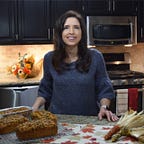The Art of the Food Experience: Lessons Learned from the Dali Museum
They say that food and cooking have both and art and a science to them. The same is true for food experiences.
Let’s examine some key attributes that make up the art of the food experience.
A recent visit to the Dali Museum in St. Petersburg, Florida caused us to ponder the art aspect of the food experience. There was an exhibit at the museum about the invention of food and the history of the famous El Bulli restaurant in Spain, founded by world-renown chef, Ferran Adria.
His restaurant changed the way people thought about food and how they could experience food. He developed food art from many different angles. Adria put a lot of time and effort into researching flavors and textures of a variety of foods.
Just like Salvador Dali researched and understood different artists, and then incorporated those styles into his artwork, so did Adria with his food creations. Adria’s restaurant focused on creativity, inspiration, and design — many of the factors usually attributed to art.
As we ponder the food experience, many of those same attributes come into play. Let’s take a look at some of them.
Style
Here we are not referring to fashion fads, such as bellbottoms or leisure suits. Instead we are referring to the overall presentation of the food.
With style, the focus is on such aspects as plate design (the plating of food), as well as how each individual food on the plate is styled in and of itself and in relation to other foods on the plate.
Many times when serving the food individually or family style, the food just goes in a lump on your plate. The mentality tends to be that food is to be eaten, and that is the main focus. However, you don’t need to be in a 5-star restaurant in order for the food to look nice on your plate.
Style is not necessarily just for show. That look — the presentation, the plating, etc., also sends messages to your brain regarding the palatability and edibility of the food. Presentation makes you want or not want that food.
Something that is simply in a big scoop on your plate may be appetizing (consider a scoop of ice cream, for example), but it may be more appetizing if presented in a different way (perhaps with a brownie next to it, along with a drizzle of raspberry sauce).
As a savory example, a plating technique is to place a ladle of sauce on the plate, followed by some meat on top of the sauce and a sprinkling of fresh herbs (sage, parsley, cilantro, etc.) for color and texture.
Style and presentation are not just for looks, but they also combine flavors and textures to create an appetizing dish. Here you combine the ingredients for the meal, but present it in a different way so as to make it palatable and interesting — something that you want to eat.
Originality
You can certainly emulate the many different presentation styles from a recipe on the web, from a dish at a restaurant, or even in your discussions with a friend or family member.
Instead, make the dish your own by putting your own twist to the food.
If you feel that adding orange juice, a lime wedge, or a sprinkling of your favorite nuts could enhance the dish, then go for it! Make the dish your own!
For one, that helps you to own the dish. It gives you confidence and a sense of accomplishment in creating that dish and in being able to make informed choices as you learn to make and create recipes.
Many times we look at recipes from a magazine or other sources and say, “Wow, that was good, but it would be better if the dish had some cheese.” Then by all means, add that ingredient! Kick it up a notch.
Taste
Yes, you want the food to look nice. You want it to have appropriate accompaniments and complementary flavors.
Taste, however, gives the meal a reason for being.
Sometimes you may eat a meal at a restaurant or elsewhere, and think, “Well, the dish looked nice, but it had absolutely no flavor.
Taste is just as vital to the art of the food experience as is presentation. How something tastes, the blend of flavors, paint and complete the picture of the food.
For example, perhaps you see something that looks appetizing. If the dish is made with fresh ingredients, the dish has appealing presentation, and it has that big wow factor of bold tastes that come together to satisfy your palate, those aspects combine to form the art of the food experience.
Behind every work of art is a story.
These factors of style, originality, and taste contribute to forming the story of your dish. Perhaps it is a recipe handed down through the generations, a recipe you found in a magazine that you want to replicate, or a recipe that you created yourself.
When you add these factors, they paint the picture and tell your story about that food. They also give the recipient of that meal as sense of likening to that food, as sense of excitement about eating the food, and develop an overall love of food.
All of these factors and results contribute to positive food experiences.
There is power in art. There is power in the food experience.
Food for Thought:
How has art influenced your food experience? What other factors does your food experience include?
Get 52 food tips and strategies FREE!
As a Food Experience Architect and Instructional Psychologist, Michelle Seidling, PhD empowers working professionals to develop healthy, sustainable eating habits for life success. Find Michelle on Medium, Facebook, and LinkedIn.
Originally published at https://foodexperienceunplugged.com on April 17, 2017.
